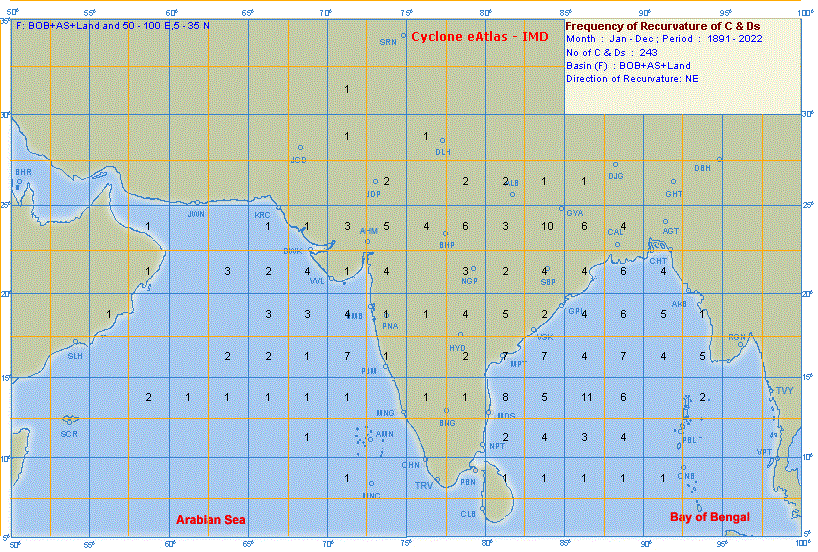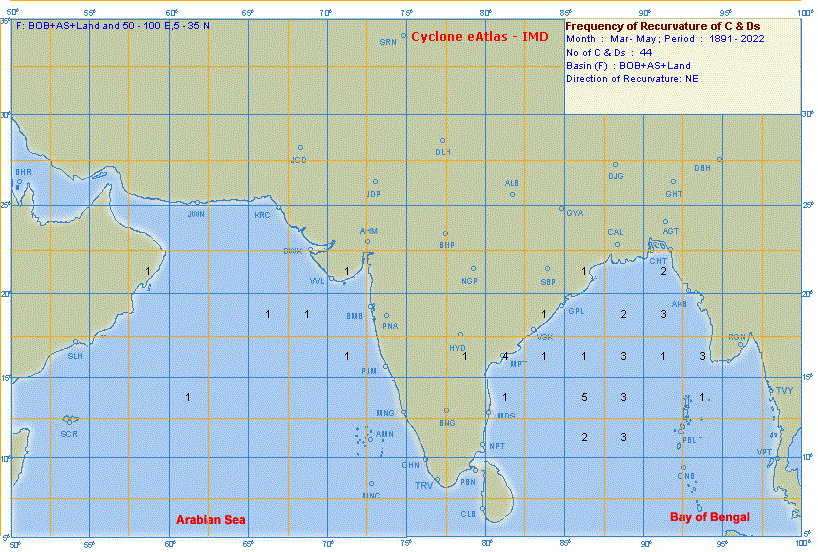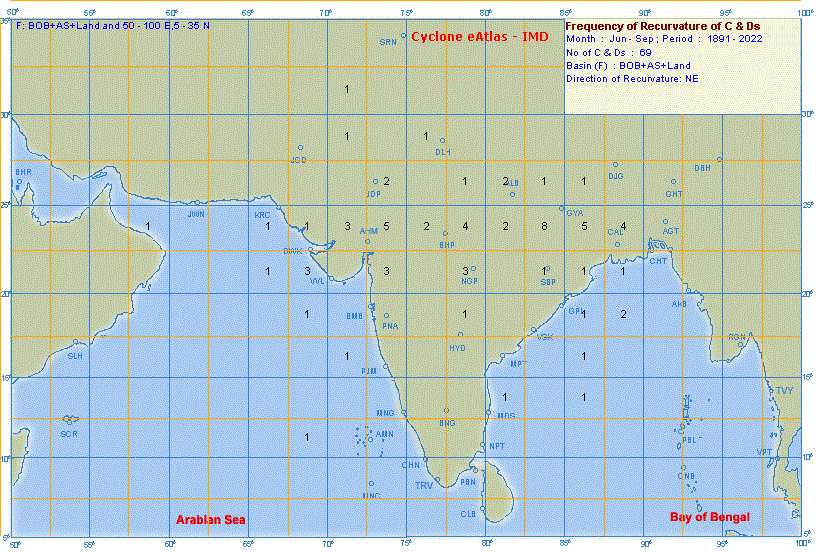Movement
Analyses of storm tracks with reference to their genesis, recurvature and landfall points on 1°x1° scale along the Indian coasts have been produced by IMD. Mostly the system developing over the NIO move in a northwesterly direction
However, there are cases of recurvature towards the northeast or east to the southwest. Frequency of recurvature of cyclonic disturbances for year as a whole during 1891-2022 is shown in Fig 1. The frequency of recurvature is higher towards the northeast compared to southwest or east. It is found that the probability of recurvature is higher over the Arabian Sea when the system moves to the north of 15°N leading to more landfalls over Gujarat coast. Over the Bay of Bengal, there is no such preferred latitude/longitude for the recurvature of the system. Seasonal frequency of recurvature is presented in Fig 2(a-d). However the probability of recurvature towards the northeast is higher during the pre-monsoon Season.
The probability of direction of movement and speed of cyclonic disturbances over the north Indian Ocean based on cyclone e-Atlas is shown in Fig.3.

Fig.1. Frequency of recurvature of cyclonic disturbances (year as whole) during 1891-2022.

Fig.2(a). Frequency of recurvature of cyclonic disturbances (Winter) during 1891-2022.

Fig.2(b). Frequency of recurvature of cyclonic disturbances (Pre Monsoon) during 1891-2022.

Fig.2(c). Frequency of recurvature of cyclonic disturbances (Monsoon) during 1891-2022.

Fig.2(d). Frequency of recurvature of cyclonic disturbances (Post Monsoon) during 1891-2022.

Fig.3 Probability of direction of movement of cyclonic disturbances over the NIO